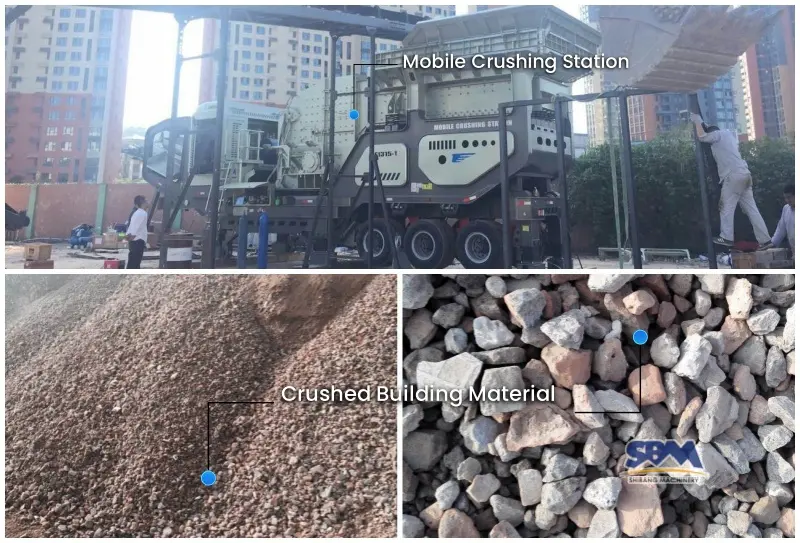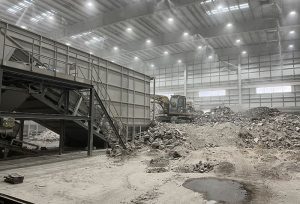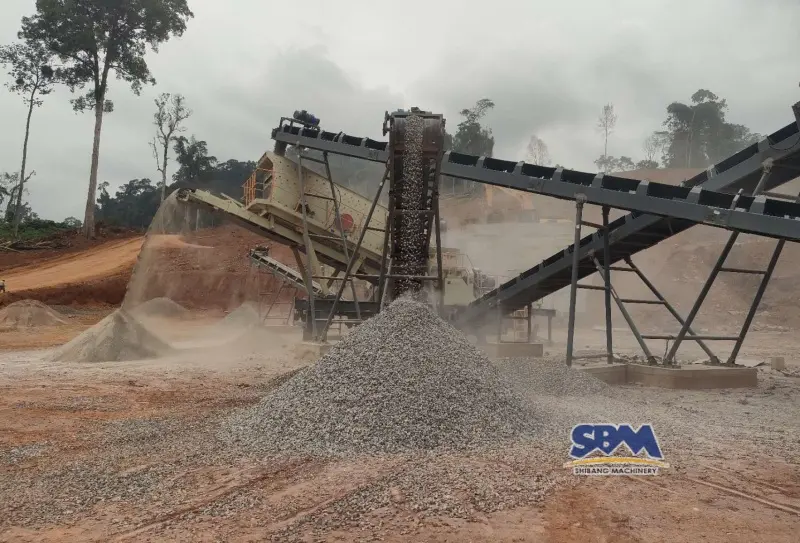E-mail: [email protected]
3/8 Đá dăm
Nội dung chính
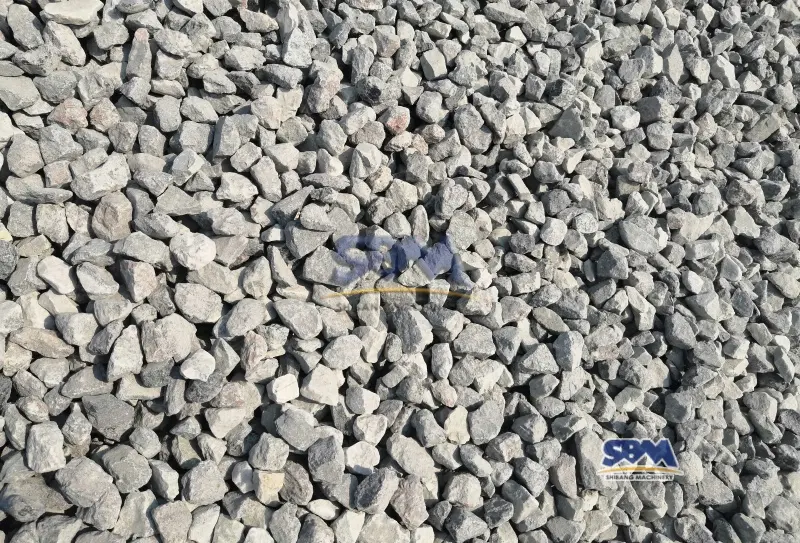
You know that satisfyingcrunch under your boots on a well-built driveway? Or the solid feel of a patio that hasn’t sunk after one winter? Chances are high that unsung hero is3/8 Đá nghiền nát. Forget fancy names or marketing hype. This stuff is the blue-collar workhorse of the construction and landscaping world. I’ve been ordering, spreading, and compacting this material for more years than I care to count – seen the good, the bad, and the downright muddy ugly when folks get it wrong. Whether you’re a contractor sizing up a big job or a weekend warrior tackling your first walkway, understanding3/8″ Đá nghiền nát (hoặc3 8 Đá nghiền nát, hoặc #67 stone – same difference most places) is like having a secret weapon. Let’s cut through the noise and talk real-world use.
What This Stuff Actually Is: Busting the Jargon?
Cutting right to it: 3/8 đá nghiền inch is basically little bits of rock –góc bits, mind you, not smooth pebbles – that have been run through a crusher and then sifted through a screen with 3/8-inch holes. Các “3/8 inch” means thebiggest pieces in the pile are that size; you’ll get a whole mix down to fine dust (“fines”). That mix is key.
- What’s It Made From? Usually whatever tough rock is local and plentiful. Around here? Hầu hếtĐá vôi nghiền nát – cheap, packs like a dream. Other places, it’s đá hoa cương, trap rock. Doesn’t much matter for most jobs as long as it’s hard.
- How’s It Made? Big rocks go in the crusher (a giant, noisy beast of a machine), get smashed down, then the pile gets shaken over screens. The stuff that falls through the 3/8-inch screen but gets caught on finer ones? That’s your3/8 Đá nghiền nát. Simple as that. (We’ll peek at the crusher game later).
- #67 Stone Confusion: Yeah, you’ll hear this term tossed around. It’s basically the DOT (Department of Transportation) or quarry spec name for material that fits the 3/8-inch profile. Think of#67 cục đá Và3/8 Đá nghiền nát as twins separated at birth – functionally identical 99% of the time. It’s your no-nonsensepea gravel alternative when you need things tostay put.
Why Bother With 3/8″? (It’s Not Just About Size)
Đồng ý, so why pick this specific size? Nó không phải là ma thuật, it’s physics and practicality:
- It Locks Up Tight: Those sharp, jagged edges? When you compact them, they bite into each other like puzzle pieces. Add in the fines filling the gaps, and you get a surface that’s almost like weak concrete. This isvàng for driveways, đường dẫn, or under patios. Doesn’t wash out easy, doesn’t rut like smoothpea gravel.
- Water Actually Drains: Even packed down, there’s enough space between the chunks for water to seep through. Crucial fordrainage rock jobs – think French drains around your foundation, backfill for pipes, under septic fields. Stops mud soup, supports the pipe.
- DoesEverything: Seriously, its resume is impressive:
- The Foundation: đường lái xe, Hàng hiên, vỉa hè, slab bases. The reliable bottom layer.
- The Surface Itself: Paths you walk on, playgrounds (drains well, decent cushion), even neat-looking landscaping beds (way tidier than big, chunky rock).
- Concrete Muscle: Yep, that sidewalk or slab? This size is perfectconcrete stone – strong without being bulky.
- Pipe Protector: Bedding for pipes, backfill for utilities. Cushions them, lets water move.
- The Drainage Go-To: French drains? Trench drains? Drainage rock champ. Lets water in, keeps dirt out.
- Won’t Break the Bank: Compared to decorative rock or specialty stuff, 3/8 đá nghiền inch is usually the budget-friendly champ, especially by the ton. You get serious bang for your buck.
- Looks… Decent: It’s not winning beauty contests against marble chips, but it’s clean, uniform, and has a tidy, workmanlike look. Blends in without fuss.
Where This Stuff Actually Earns Its Keep (Real Jobs)
Enough theory. Where should youThực ra be using3/8 Đá nghiền nát?
- đường lái xe (Trang chủ & Biz): As the top surface (especially if you like that rustic gravel look) hoặc, more commonly, the super-stable base layerunder asphalt or pavers. Stops the top layer from sinking into mud.
- Sân hiên & Walkway Prep: Cácthiết yếu layer under your fancy pavers or flagstone. Provides drainage and a rock-solid, level base that won’t settle unevenly. Skip this step at your peril.
- Mixing Concrete: The backboneconcrete stone in tons of mixes. Gives it bulk and backbone.
- French Drains & Dry Wells: Cácdrainage rock wrapped around the perforated pipe. Its job? Let water flowin while filtering out silt that would clog the pipe. Mission critical.
- Septic Fields & Pipe Hugging: Provides support and drainage around the delicate leaching pipes and chambers. Keeps the system breathing.
- Playground Surfacing: Creates a firm-but-forgiving surface that drains rainwater fast. Safer than dirt, less harsh than concrete. (Check depth requirements for safety!).
- Functional Landscaping: Under downspouts, around AC units, in utility areas, or even under shrubs where you want low-maintenance, weed-blocking ground cover. A stablepea gravel alternative where looks are secondary.
- Behind Retaining Walls: Used as backfill (wrapped in fabric!) to drain water awayfast, relieving pressure on the wall. Prevents blowouts.
Trị giá & How Much? (Let’s Get Real About Money & Math)
Let’s not sugarcoat it. Cost matters. What hits your wallet with3/8 Đá nghiền nát?
- Where You Live: Biggest factor. Hauling rock is expensive. Quarry next door? Cheap. Middle of nowhere? Ouch.
- Rock Type: Granite usually costs more than limestone.
- How Much: Buying a dump truck load (by the ton or cubic yard) is WAY cheaper per pound than those dinky bags at the box store.
- Who You Buy From: Shop around! Quarries are usually cheapest, landscape yards offer convenience, box stores… well, avoid for bulk.
Ballpark Costs (Expect These Ranges – 2024-ish)
| How You Buy It | Low End | Realistic Range | High End (or Convenience Tax) | What Drives the Price? |
|---|---|---|---|---|
| By the Ton | $15 | $22 – $40 | $55+ | Vị trí, rock type, diesel prices |
| By the Cubic Yard | $20 | $28 – $55 | $75+ | (Roughly: 1 Ton ≈ 0.75 Cubic Yards) |
Figuring Out How Much You Need: Don’t Guess!
Ordering too much wastes money. Ordering too little wastestime (and sanity). Here’s the contractor-grade method:
- Measure Your Space: Chiều dài (ft) x Width (ft) x Depth (ft youwant after compaction) = Cubic Feet (ft³). *Ví dụ: 10ft long x 5ft wide x 0.33ft (4 inch) deep = 16.5 ft³*
- Convert to Cubic Yards (yd³): Cubic Feet ÷ 27. *16.5 ft³ ÷ 27 = 0.61 yd³*
- The CRITICAL Compaction Factor:3/8 Đá nghiền nát squishes downa lot when you compact it. You need to ordermore loose stone to get your desired compacted depth. Multiply your calculated yd³ by:
- 1.35 – 1.4: For bases (like under a driveway or patio – 4 inches compacted).
- 1.25 – 1.3: For deeper drainage layers (giống 12 inches in a trench).
- 1.1: If you’re just loosely filling something (rare for this stone).
- *Our Example (Patio Base): 0.61 yd³ x 1.35 = 0.82 yd³*
- Order Slightly Over: Round up! Dealing with 0.82 yards? Order1 full cubic yard. Running short by half a wheelbarrow load is infuriating. Suppliers usually have minimums anyway (thường 1 yard for delivery).
Cho tiền boa: Always ask your supplier, “How many tons per cubic yard isyour 3/8 đá nghiền inch?” Density varies slightly. An onlinegravel cost calculator can help, but verify with the source.
Putting It Down Right: Installation Truths (Learn From My Mistakes)
I’ve seen beautiful stone jobs turn to mush because someone skipped a step. Do it right:
Prep Like Your Project Depends On It (Because It Does)
- Strip off all grass, plants, and that soft topsoil. Get down to firm dirt.
- Dig deeper than yourfinal stone depth. Nhu cầu 4 inches of compacted stone? Dig out 5+ inch.
- Slope it! Aim for at least 1/4 inch per foot slopeaway from houses or structures. Water needs an escape route.
- GEOTEXTILE FABRIC IS NON-NEGOTIABLE: Lay down heavy-duty landscape fabrictrước a single stone touches the ground. This single step prevents mud from bubbling up through your stone and stops weeds dead. It triples the life of your3/8 Đá nghiền nát layer. Spend the extra $50. Seriously.
Getting the Stone There
- Clear a path for the dump truck. They need space and firm ground. Tell them where to dump!
- Spread it roughly with a shovel or rake. Aim for a thickness about 20-25% thicker than yourfinal compacted depth (that’s what the multiplier was for).
Compaction: This Ain’t Optional
- Rent a plate compactor (walk-behind vibratory plate). For anything bigger than a postage stamp, hand tamping is useless.
- Compact in thin lifts! 2-3 inches of loose stone at a time is ideal. Trying to compact 6 inches at once doesn’t work.
- “Watering In”: If the stone is bone dry, lightly spray it with a hosetrước compacting each lift. The moisture helps the fines bind everything together like glue. Don’t make soup!
- Compact until the machine almost bounces, and your boots barely leave an imprint. It should feelsolid.
Keep It Contained
If3/8 Đá nghiền nát is your final surface (like a path), install strong edging. Plastic, kim loại, pressure-treated timber – something to hold it in. Nếu không thì, itsẽ creep into your lawn and flower beds over time. Looks messy.
Keeping It Tidy
Every now and then, rake it smooth, especially high-traffic areas. Top it off with a little fresh stone every few years if it gets thin or washes away.
How the Heck Do They Make This Stuff? (A Quick Crusher Pit Stop)
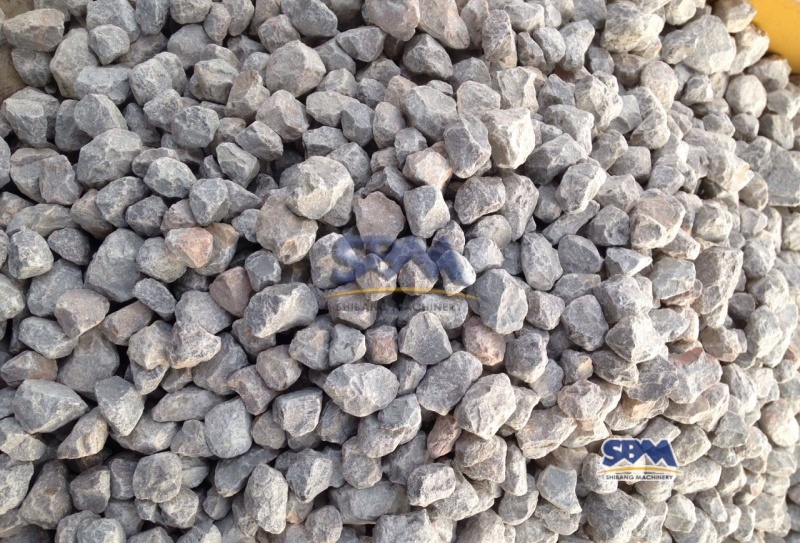
Ever wonder how giant boulders become perfect little piles of 3/8 Đá nghiền nát? It’s all about brute force and precision. máy nghiền hàm (the big chompers) start the job, breaking boulders down. But for our 3/8 đá nghiền inch, the real star is often the máy nghiền hình nón. Think of a giant spinning cone inside a bowl – rocks get squeezed and crushed in between. The operator sets the gap precisely to spit out the right size. Sau đó, massive vibrating screens sort the pile – the 3/8-inch screen catches the big stuff, lets the perfect 3/8 Đá nghiền nát fall through, and sends the fines elsewhere. Companies like SBM China build these industrial beasts – tough machines designed to run hard in quarries day in, day out, spitting out consistent product. It’s impressive engineering, honestly.
How It Stacks Up Against the Other Guys?
3/8 Đá nghiền nát isn’t the only player. Here’s the real-world lowdown:
- vs. Pea Gravel:
- 3/8 Stone: Góc, locks up, stable, drains well. Use it where you need things tostay: đường lái xe, bases, drainage trenches.
- Pea Gravel: Smooth, round, rolls underfoot, shifts constantly, pretty. Use it for pure decoration, loose top paths (if you don’t mind raking), sandbox-like playground areas.
- The Verdict: Need stability? 3/8 Đá nghiền nát wins every time. Just want pretty? Pea gravel.
- vs. Larger Crushed Stone (3/4″ or 1″):
- 3/8 Stone: Packs tighter, smoother surface, better for concrete, great for shallower layers.
- Larger Stone: More voids (sometimes better fordeep drainage or erosion control), doesn’t compact as hard, can be cheaper per ton for massive fills.
- The Verdict: Surface work, bases, bê tông? 3/8 Đá nghiền nát. Deep, deep drainage fill? Maybe bigger stone.
- vs. Crusher Run / Quarry Process (QP):
- 3/8 Stone: Lau dọn, consistent size (3/8″ down), drains well, compacts great.
- Crusher Run: Has everything from dust up to maybe 1.5″, compacts into an incredibly hard, nearly waterproof slab. Awesome for road bases under asphalt, terrible for drainage.
- The Verdict: Need drainage? 3/8 Đá nghiền nát. Need an indestructible road base? Crusher Run.
Finding It: Where to Get Your Hands on the Good Stuff
Nhu cầu3/8 Đá nghiền nát? Don’t overcomplicate it:
- Local Quarries: Usually the cheapest source, especially for truckloads. They make it. Call them. Ask for “#67 cục đá” hoặc “3/8 minus”.
- Landscape Supply Yards: Buy bulk from quarries and resell. More convenient for smaller loads (1/2 yard, 1 yard), often deliver smaller quantities than quarries. Expect a slight markup for convenience.
- Big-Box Stores (Last Resort): They sell it in bags. This is the most expensive way to buy gravel on the planet. Only use for tiny, tiny repair jobs.
What to Ask When You Call:
- “Do you carry#67 cục đá or specifically screened3/8 đá nghiền inch?”
- “What’s the base rock? đá vôi? đá hoa cương?” (Limestone is usually fine and cheaper).
- “What’s the price per ton and per cubic yarddelivered ĐẾN [Your Zip Code/Town]?” (Delivery fees kill!).
- “What’s the weight per cubic yard for your material?” (Crucial for converting yards to tons for ordering).
- “What’s your minimum delivery? What’s the delivery fee?”
More Than Just Rocks in a Pile
Look, 3/8 Đá nghiền nát isn’t glamorous. It’s not trendy. But walk outside – it’s probably holding up your driveway, draining water away from your foundation, or giving strength to the concrete in your steps. It’s fundamental. It’s reliable. Trong khipea gravel looks nice in a pot, and bigger stone has its massive jobs, when you need something thatworks, that stays put, drains water, and does it without costing a fortune, 3/8 đá nghiền inch is tough to beat.
Knowing what it is, where to use it, how much you need, and crucially, how to install it properly, means you build things that last. So next time you see that pile of gray stone at the supply yard, give it a nod of respect. It’s the quiet backbone of a lot of solid work. Got a project brewing? Grab your tape measure, do the math, prep the heck out of your site, lay that fabric, and put this humble workhorse to work. You won’t regret it.

